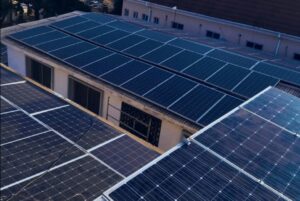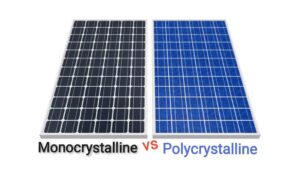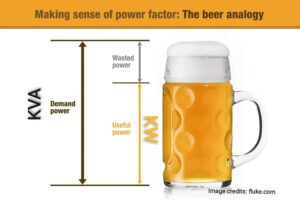Introduction to solar panels maximization
Innovations in solar panels technology have resulted from the solar energy sector’s explosive growth. In this article, we will focus more on the the most common solar panels for solar power generation. These two are common in homes, businesses, and industries. However, they have substantial differences in terms of effectiveness, price, and other elements. In order to assist you in making an informed choice when contemplating solar energy for your home or place of business, we will examine the distinctions between monocrystalline and polycrystalline solar panels in this post.
Choosing the Appropriate Solar Panel Type
Solar panels come in a variety of forms, including monocrystalline, polycrystalline, and thin-film panels. Each variety has distinctive qualities, costs, and levels of efficiency. To choose the solar system that best suits your demands and budget, do some research and speak with reliable solar firms.
Analyze Your Energy Requirements
Examine the trends of energy consumption in your home or place of business before installing solar panels. This is also plays a major role to determine your solar panel size. Aspects like the number of occupants, energy-hungry appliances, and anticipated future growth in energy demand are also very significant in this regard.
Select an Honest Solar Provider
It’s essential to choose a reputable and knowledgeable solar panel supplier. Choose businesses with a solid track record, glowing client testimonials, and the required credentials. You will be led through every step of the procedure, from design and installation to maintenance, by a reliable source.
Best panel positioning and orientation
Solar panel installation and orientation have a big impact on how much electricity they produce. For maximum sunlight throughout the day, panels in the Northern Hemisphere should face south. Make sure there aren’t any obstacles, like high trees or structures, that can cast shadows on the panels.
Cleaning and upkeep on a regular basis
For your solar panels to be effective, you must keep them clean. The amount of sunlight reaching the cells can be decreased over time by the accumulation of dust, dirt, bird droppings, and other debris. The best way to maximize energy production is to clean frequently with a soft brush, mild detergent, and water.
Tracking Energy Production
Many contemporary solar panel systems have monitoring capabilities that let you keep tabs on energy generation in real time. Your panels will work to their maximum capacity if you monitor, which enables you to quickly spot any problems.
Think about energy storage options
Energy storage devices, commonly referred to as solar batteries, enable you to store extra energy produced by your solar panels for later use. This can help you by giving you a dependable supply of electricity during times of low sunshine or power disruptions.
Profit from incentives and rebates
To promote the use of solar energy, several governments give rebates, tax credits, and other incentives. Find out about any local and federal initiatives that may be available to you; they can help you drastically lower the overall cost of installing solar panels.
Spend money on energy-saving appliances.
You can further increase your energy savings by integrating your solar panel system with energy-efficient appliances. To ensure a product meets strict energy efficiency criteria, look for high Energy Star ratings.
Learn About Solar Panel Maintenance
Knowing the fundamentals of solar panel maintenance will enable you to take care of small issues quickly and save money. Learn the standard troubleshooting techniques, and arrange routine inspections with a qualified technician. Spend money on energy-saving appliances. You can further increase your energy savings by integrating your solar panel system with energy-efficient appliances. To ensure a product meets strict energy efficiency criteria, look for high Energy Star ratings.
Monocrystalline vs. Polycrystalline Solar Panels: Which is the Better Choice for Your Renewable Energy System?
The rapid growth of the solar energy industry has led to various technological advancements in solar panel technology. Among the most popular types of solar panels are monocrystalline and polycrystalline panels. These two options are commonly used in residential, commercial, and industrial solar energy systems.
However, they differ significantly in terms of efficiency, cost, and other factors. In this article, we will delve into the differences between monocrystalline and polycrystalline solar panels to help you make an informed decision when considering solar energy for your home or business.
Understanding Solar Panels
Before we dive into the specifics of monocrystalline and polycrystalline solar panels, let’s briefly review how solar panels work. Solar panels are devices designed to capture sunlight and convert it into electricity. They consist of numerous solar cells, which are responsible for this conversion process.
Solar cells are typically made from semiconductor materials, such as silicon, which is the most commonly used material for solar panels. When sunlight hits the solar cells, it excites electrons in the semiconductor, creating an electric current. This electricity can then be used to power homes, businesses, or be fed back into the grid.
Now that we have a basic understanding of how solar panels function, let’s explore the key differences between monocrystalline and polycrystalline solar panels.
Monocrystalline Solar Panels
Monocrystalline solar panels are known for their efficiency and sleek appearance. They are made from high-purity silicon, and their manufacturing process involves growing a single crystal structure, resulting in a single-crystal wafer. This process makes monocrystalline solar cells highly efficient in converting sunlight into electricity.
-
Efficiency
One of the primary advantages of monocrystalline solar panels is their high efficiency. Due to their single-crystal structure, they can convert a higher percentage of sunlight into electricity compared to polycrystalline panels. Monocrystalline panels typically have efficiency ratings ranging from 15% to 22%, with some premium models exceeding 22%.
Higher efficiency means that you can generate more electricity in the same amount of space, making monocrystalline panels an excellent choice for installations with limited rooftop or ground space.
-
Space Efficiency
Monocrystalline panels are also space-efficient. They require less space to generate the same amount of electricity as polycrystalline panels. This is particularly beneficial for residential installations where roof space may be limited or for those looking to maximize energy production in a smaller area.
-
Durability
Monocrystalline solar panels are known for their durability and longevity. They are typically backed by longer warranties, often spanning 25 to 30 years or more. The single-crystal structure of monocrystalline cells is less susceptible to cracking or damage, ensuring a more extended lifespan and reliable performance.
-
Aesthetics
Monocrystalline panels are often preferred for aesthetic reasons. Their uniform black color and sleek design make them blend seamlessly with rooftops and architectural designs. This is especially appealing to homeowners who want their solar panels to complement the overall appearance of their homes.
-
Cost
While monocrystalline solar panels offer several advantages, they are generally more expensive than polycrystalline panels. The higher cost is primarily attributed to the advanced manufacturing process and the higher efficiency they offer. However, it’s important to note that the long-term energy savings and durability of monocrystalline panels can offset their initial higher investment.
Polycrystalline Solar Panels
Polycrystalline solar panels are another popular choice in the solar industry. They are made from multiple silicon crystals, which are melted together during the manufacturing process. Polycrystalline panels are recognizable by their blue or bluish-green appearance.
-
Efficiency
Polycrystalline solar panels are generally less efficient than monocrystalline panels. Their efficiency typically ranges from 13% to 16%, although some premium models can achieve slightly higher efficiency. The lower efficiency means that they capture and convert a smaller percentage of sunlight into electricity.
-
Cost
One of the primary advantages of polycrystalline solar panels is their lower cost. The manufacturing process is less complex and uses less high-purity silicon, making them a more budget-friendly option. This makes polycrystalline panels an attractive choice for those looking to install a solar energy system without a significant upfront investment.
-
Space Requirements
Due to their lower efficiency, polycrystalline panels require more space to generate the same amount of electricity as monocrystalline panels. This can be a limitation for homeowners or businesses with limited available roof or ground space.
-
Durability
While polycrystalline panels are generally durable and come with warranties ranging from 20 to 25 years, they may be slightly more susceptible to heat-related stress and microcracks compared to monocrystalline panels. However, the difference in durability is usually minimal.
-
Appearance
The appearance of polycrystalline panels is a matter of personal preference. Some people find the blue or bluish-green color less aesthetically pleasing compared to the sleek black appearance of monocrystalline panels. However, the visual impact can vary depending on the installation and the individual’s taste.
Choosing Between Monocrystalline and Polycrystalline Solar Panels
The choice between monocrystalline and polycrystalline solar panels depends on various factors, including your budget, available space, energy efficiency goals, and aesthetic preferences. Here are some key considerations to help you make an informed decision:
- Budget: If cost is a significant factor for you, polycrystalline panels may be the better choice due to their lower upfront cost. However, it’s essential to consider the long-term energy savings and potential higher efficiency of monocrystalline panels.
- Space: If you have limited space for solar panel installation, monocrystalline panels may be the preferred option because of their higher efficiency and space efficiency.
- Efficiency: If maximizing energy production is a top priority, monocrystalline panels are generally more efficient and will generate more electricity per square foot of space.
- Aesthetics: Consider the visual impact of the solar panels on your property.
- Warranty: Check the warranties offered by manufacturers for both monocrystalline and polycrystalline panels. Longer warranties can provide peace of mind regarding the durability and performance of your solar panels.
- Environmental Impact: Some individuals prioritize environmental sustainability. Both types of panels have a relatively low environmental impact compared to fossil fuels, but the higher efficiency of monocrystalline panels may result in a slightly lower carbon footprint over their lifetime.
Solar Panels Peak Sun Hours and Positioning
Placing your solar panels on the roof or constructing them as a shade is not an automatic guarantee that they will harvest efficient power for you, regardless of their rated power.
You need to consider placing your panels where they can get good sunlight all day. This, in return, will increase your PEAK SUN HOUR.
PEAK SUN HOUR is as the hour in the day when the intensity of the sunlight reaches an average of 1000 watts per square meter. This varies by geographical location. For example, a location that gets 5 Peak Sun Hours (kWh/m²), means that area gets 5 hours of solar power when the average intensity of sunlight is 1000 watts/meter².
If, for instance, you have 8 pcs of 300W (that is, 8x300W = 2400W or 2.4 KW) solar panels with a power size of 2.4 KW and an average of 5 peak sun hours, you will have a daily generated energy at:
5 hours (Peak Sun Hours) x 2400 W = 12,000 WH, or 12 KWH.
learn more about the difference between KW and KVA
Note: For simplicity, these numbers do not represent factors like temperature loss, solar panel shading or wrong positioning, poor cabling, inverter or charge controller inefficiencies, etc.
Conclusion
Monocrystalline and polycrystalline solar panels each have their own set of advantages and disadvantages. Your choice should be based on your specific needs, budget, and preferences.
Monocrystalline panels are known for their high efficiency, space efficiency, and sleek appearance but come at a higher initial cost. Polycrystalline panels offer a more budget-friendly option with lower efficiency but may be a suitable choice for those with ample space and a limited budget.
Ultimately, both types of solar panels contribute to a sustainable and renewable energy future. Whichever option you choose, investing in solar energy is a significant step toward reducing your carbon footprint and contributing to a cleaner, more sustainable planet.
Ensure to consider the peak sun hours and sun direction of your area.
Also, remember that ongoing vigilance and proper care are key to ensuring your panels operate efficiently for years to come. Embrace the power of solar energy and contribute to a greener, more sustainable planet.



